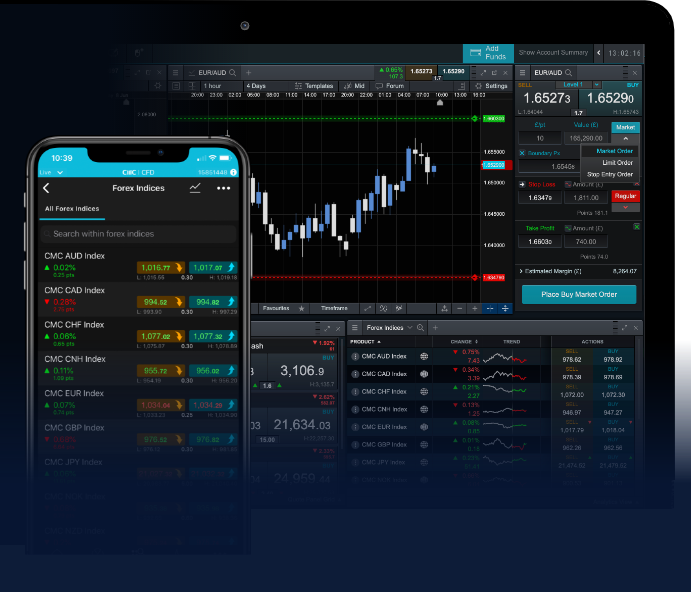Understanding Forex Trading Indicators Your Guide to Successful Trading 1708086204 Leave a comment

Forex trading indicators are crucial tools in the toolkit of any trader. These indicators assist in the analysis of price movements and market trends, allowing traders to make informed decisions. Indicators can simplify complex data, making it accessible and actionable. Whether you’re a beginner or a seasoned trader, understanding these indicators can be the key to unlocking your trading potential. For comprehensive resources and tools, you can check forex trading indicators onlinetrading-cm.com, which is a valuable asset for traders at all levels.
What are Forex Trading Indicators?
Forex trading indicators are mathematical calculations based on the price, volume, or open interest of a currency pair. They are used to forecast future price movements and identify trading opportunities. Essentially, indicators synthesize a lot of data into a simpler format that helps traders to take actionable decisions.
Types of Forex Trading Indicators
There are primarily two types of trading indicators: lagging indicators and leading indicators.
1. Lagging Indicators
Lagging indicators, also known as trend-following indicators, are used to confirm trends. They rely on historical data and provide signals after the trend has already started. This means they are better at identifying the overall direction of a market rather than predicting future movements. Some popular lagging indicators include:
- Moving Averages: Used to smooth out price data over a specific period, moving averages help in identifying the direction of the trend. Simple Moving Averages (SMA) and Exponential Moving Averages (EMA) are two common forms.
- MACD (Moving Average Convergence Divergence): This is a trend-following momentum indicator that shows the relationship between two moving averages of a security’s price. Traders look for bullish or bearish signals from the MACD line crossing the signal line.
- Relative Strength Index (RSI): This momentum oscillator measures the speed and change of price movements, providing signals about overbought or oversold conditions.
2. Leading Indicators

Leading indicators are designed to predict future movements in price. Unlike lagging indicators, they provide signals before a new trend begins. Some notable leading indicators are:
- Stochastic Oscillator: This indicator compares a particular closing price of a currency pair to a range of its prices over a certain period. It’s used to identify overbought or oversold levels.
- Bollinger Bands: These consist of a middle band (SMA) and two outer bands. The outer bands expand and contract based on market volatility. Traders use this to gauge potential price reversals.
- CCI (Commodity Channel Index): This versatile indicator can be used to identify trends and reversals, as it measures the deviation of the price from its average.
How to Use Forex Trading Indicators Effectively
Using indicators effectively requires understanding their functionalities and how they align with your trading strategy. Here are some tips:
- Combine Indicators: Do not rely on a single indicator for trading decisions. Combining different types of indicators can provide a more comprehensive view of market conditions.
- Set Proper Time Frames: The effectiveness of an indicator can vary significantly based on the time frame you choose. Consider your trading style—day trading, swing trading, or long-term trading—and select indicators accordingly.
- Backtest Indicators: Before using any indicator live, backtest it on historical data to see how it would have performed under various market conditions. This can help identify potential strengths and weaknesses.
- Stay Informed: Market conditions can change rapidly. Staying updated with financial news and analysis can complement your use of indicators.
Common Mistakes to Avoid with Forex Trading Indicators
While indicators can be incredibly helpful, they can also lead traders astray. Here are some common mistakes to avoid:
- Over-Reliance: Relying solely on indicators without understanding market fundamentals can lead to significant losses.
- Ignoring Market News: Fundamental news events can dramatically influence prices, and ignoring these can lead to unexpected losses.
- Using Too Many Indicators: Overloading charts with too many indicators can create confusion. It’s essential to keep your analysis clear and actionable.
Conclusion
Forex trading indicators are vital for making informed trading decisions. By understanding the types of indicators available and how to use them effectively, traders can greatly enhance their chances of success in the forex market. Balancing the use of indicators with a solid grasp of market dynamics and news can further bolster your trading strategies. Always remember that while indicators can assist in identifying potential trades, they should be part of a broader, well-rounded trading approach.
